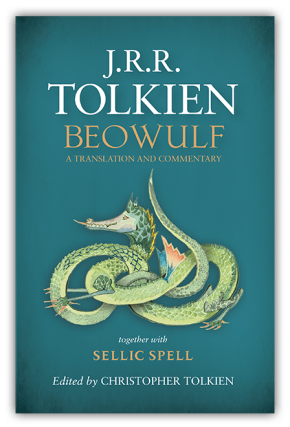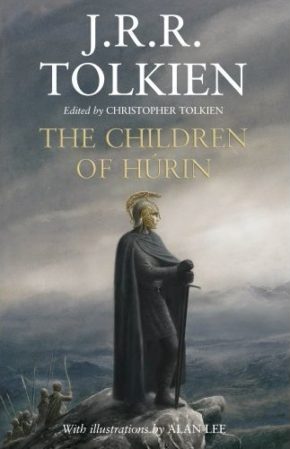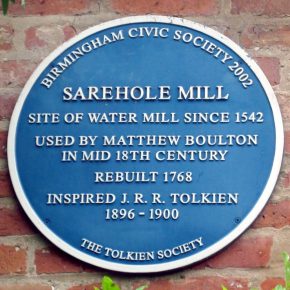A selection of his sources of inspiration to read for free
In these difficult times many readers turn to the wonderful stories J.R.R. Tolkien has told – tales in which the unexpected heroes step forward to bravely succeed against all odds, where quiet perseverance and an all pervading sense of hope allows everyday people to come through. Tolkien himself knew loss and trauma from his early years, losing both father and mother as well as being a soldier in World War I in which many of his best friends perished.
He managed to blend a wealth of information and a wide range of literary and other sources with his creativity to provide us with The Hobbit, The Lord of the Rings, The Silmarillion and many other wonderful tales besides. The COVID-19 crisis has many of us in isolation in our homes and if you have time to spend I would like to suggest to you a number of freely available websites on those sources that demonstrably were an influence on J.R.R. Tolkien, both professionally and creatively.
The only thing you need for this little journey is a browser and internet access.
Enjoy!
Nota bene: This is a perfectly random and certainly not exhaustive choice of sources for you to peruse and they appear in no order of importance. The field of research determining the sources of Tolkien’s work, both professionally and creatively, is a very wide one and if you would like to get more of an insight I would suggest looking up Jason Fisher’s ‘Tolkien and the study of his sources.’

Beowulf
The Old English epic poem Beowulf provided Tolkien with much, much more than just a simple reference of a thief stealing a golden cup from a dragon’s treasure. It shaped his thinking as an academic and his lecture Beowulf: The Monsters and the Critics is considered the ‘start’ of modern day Beowulf criticism. Please refer to Michael Drout’s excellent second and revised edition of Tolkien’s lecture.
Luckily for you the manuscript held with the British Library (known as Cotton Vitellius A. xv) is available online as part of the Electronic Beowulf. Higher resolution scans are available directly via the BL.
Let’s head on over to BEOWULF.
Sir Gawain and the Green Knight
Tolkien edited a landmark edition of this unusual tale with his colleague E.V. Gordon and that they got to do this was quite a miracle, according to the British Library’s website and the manuscript involved:
The manuscript is part of the collection of Robert Cotton (1570/71–1631) which, in the 18th century, was stored in the ominously named Ashburnham House. On 23 October 1731, a fire ripped through Ashburnham House and many manuscripts were destroyed. The famous Beowulf manuscript was singed at the edges. Cotton MS Nero A X could easily have succumbed to the same fate, which makes Gawain and the other texts in the manuscript especially precious.
As well as Gawain, the manuscript includes three other poems, Pearl, Cleanness and Patience. They are all thought to have been written by the same author, who is often referred to as the ‘Gawain poet’ or the ‘Pearl poet’.
Tolkien and E.V. Gordon’s edition can be browsed here; Tolkien’s translations were posthumously published by his son Christopher 1975 as Sir Gawain and the Green Knight, Pearl and Sir Orfeo. The BBC has a lovely site on explaining the ‘basics’ and if you feel like going overboard with SGGK please visit Luminarium.
Kalevala

The national epic of Karelia and Finland had a profound impact on Tolkien which he acknowledged in a letter to W.H. Auden on June 7, 1955:
I mentioned Finnish, because that set the rocket off in story. I was immensely attracted by something in the air of the Kalevala, even in Kirby’s poor translation. I never learned Finnish well enough to do more than plod through a bit of the original, like a schoolboy with Ovid; being mostly taken up with its effect on ‘my language’. But the beginning of the legendarium, of which the Trilogy is pan (the conclusion), was in an attempt to reorganize some of the Kalevala, especially the tale of Kullervo the hapless, into a form of my own.
The Kalevala not only left its imprint on the character of Túrin Turambar but also on his creation of ‘Elven-latin’, that is Quenya, the High-elven tongue. Tolkien mentioned ‘Kirby’s poor translation’, which is available with the Internet Archive. The Finnish Literary Society offers you more of an insight into how this epic came into being.
Norse mythology/ William Morris
Again, this particular set of literature and/or myth goes well beyond simply offering Tolkien a list of Dwarven names as taken from the “Dvergatal” (“Catalogue of Dwarves”) in the Völuspá, the first poem in the Poetic Edda. The linguist would find connections that helped the writer to come up with concepts and storylines changed, evolved and revisited in the course of decades. It is not a surprise that Christopher Tolkien posthumously published his father’s The Legend of Sigurd and Gudrun, based on the Völsunga saga. If you want to run wild on all things Old Norse Project Runeberg might be your first choice; however, if you just feel like browsing through a wealth of stories you might jump for the Wikisource material.
Oh, and not to forget: The British textile designer, poet, novelist, translator, and socialist activist associated with the British Arts and Crafts Movement, William Morris, was of importance to Tolkien who read his translation of The Volsunga Saga. Found with the Internet Archive.
George MacDonald
The Scottish author, poet and Christian minister proved influential as we can read in Humphrey Carpenter’s Letters with letter no. 262 of September 7, 1964:
[Pantheon Books of New York asked Tolkien to write a preface to a new edition of George MacDonald’s The Golden Key. Although he did not in the event write it, the result of his beginning work on the preface was the composition of Smith of Wootton Major, which began as a very short story to be contained within the preface (…)]
MacDonald’s unusual novels can be found via Project Gutenberg or with the Internet Archive. Please pay special attention to The Princess and the Goblin.
H. Rider Haggard
In a 1966 interview with Henry Resnick Tolkien acknowledged the influence novels of Haggard had on him, particularly She. The interview appeared in the fanzine Niekas. You can get the novel at Project Gutenberg or with the Internet Archive.
Honorary mentions
 Their books are essential to Tolkien research and their blog is comprised of many gems related to Tolkien’s life and works; also, the title of the blog is award–winning: Wayne G. Hammond and Christina Scull’s Too Many Books and Never Enough. Tolkien, Race and Cultural History/ A Secret Vice / Tolkien & the Great War: Although those books are obviously not in the public domain I would love to highlight them as John Garth, author of Tolkien & the Great war offers a great collection of essays telling you about what influenced Tolkien’s life and work on his personal blog for free just as Dimitra Fimi does with hers. Douglas A. Anderson’s blog is always worth a visit just as John D. Rateliff‘s. All of those sites include first class research, anecdotes and miscellanea you would never have connected with J.R.R. Tolkien. And if you don’t feel like reading but listening and/ or watching the Bodleian Libraries’ Bodcasts are an amazing source of information on what made Tolkien tick. Also the J.R.R. Tolkien Lectures are available on YouTube. They are not directly related to Tolkien’s life and works but if you take an interest in the wider world of fantasy literature it is well worth watching them. Authors presenting included V.E. Schwab, Susan Cooper, Terri Windling, and Lev Grossman.
Their books are essential to Tolkien research and their blog is comprised of many gems related to Tolkien’s life and works; also, the title of the blog is award–winning: Wayne G. Hammond and Christina Scull’s Too Many Books and Never Enough. Tolkien, Race and Cultural History/ A Secret Vice / Tolkien & the Great War: Although those books are obviously not in the public domain I would love to highlight them as John Garth, author of Tolkien & the Great war offers a great collection of essays telling you about what influenced Tolkien’s life and work on his personal blog for free just as Dimitra Fimi does with hers. Douglas A. Anderson’s blog is always worth a visit just as John D. Rateliff‘s. All of those sites include first class research, anecdotes and miscellanea you would never have connected with J.R.R. Tolkien. And if you don’t feel like reading but listening and/ or watching the Bodleian Libraries’ Bodcasts are an amazing source of information on what made Tolkien tick. Also the J.R.R. Tolkien Lectures are available on YouTube. They are not directly related to Tolkien’s life and works but if you take an interest in the wider world of fantasy literature it is well worth watching them. Authors presenting included V.E. Schwab, Susan Cooper, Terri Windling, and Lev Grossman.
#QuarantineWithTolkien: Coined by the Tolkienist
It gives me great pleasure to acknowledge that I seem to have coined this particular hashtag on Twitter on March 18, 2020. Yes, the Morgan Library who hosted the Tolkien: Maker of Middle–earth exhibition in New York City was three minutes quicker than me but they misspelt it so I can claim it for my own (please imagine myself grinning while writing this.)
Many of us find solace in the Professor’s writings and quite a few start wonderful projects, take care of fellow fantasy fans and help us get through this ordeal together. If you happen to be active on Twitter or other social media channels and post something Tolkien–related please do use the hashtag #QuarantineWithTolkien so we all can look for your posts.